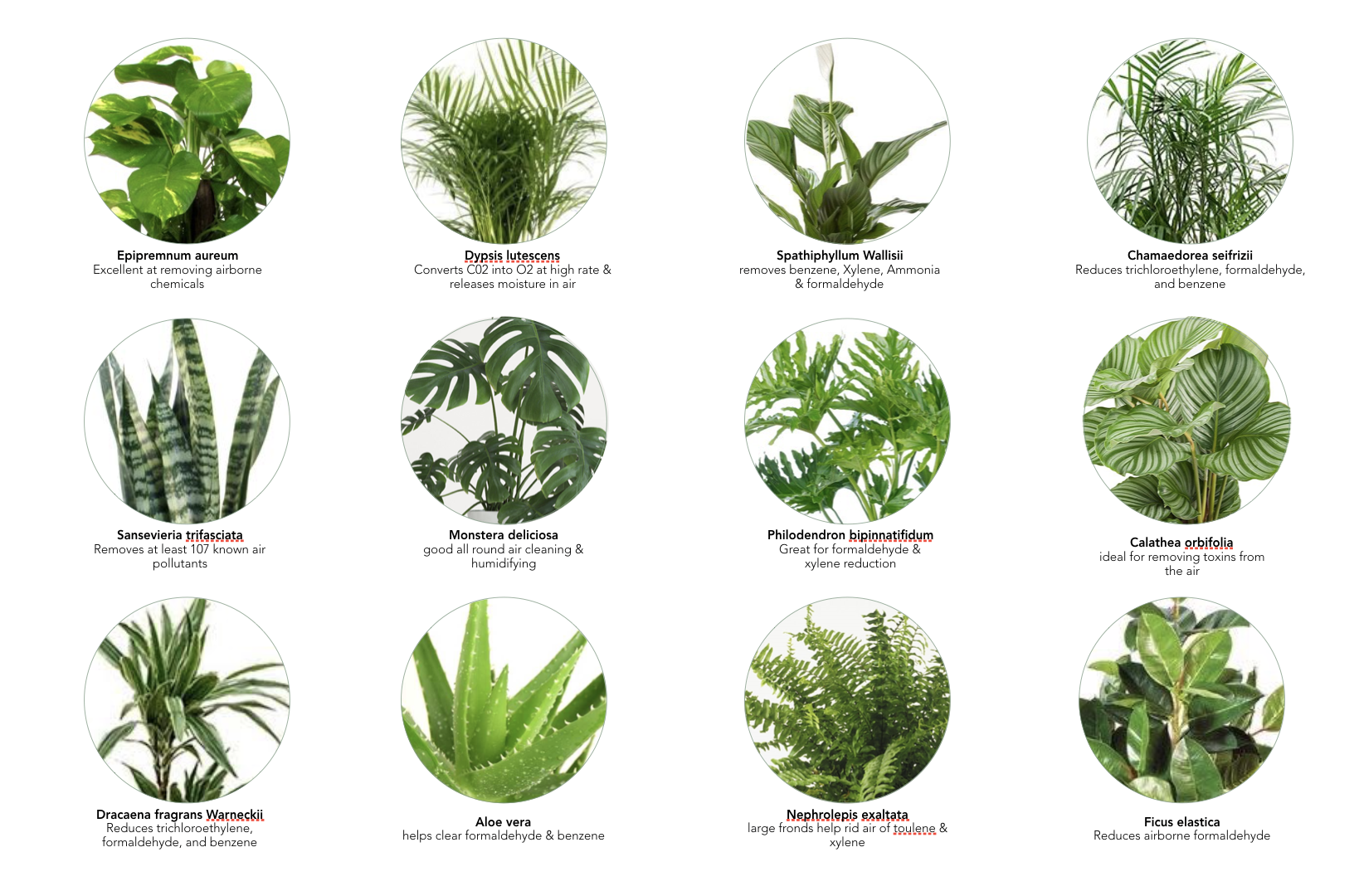

29 Apr Biosystems are Curing ‘Sick’ Buildings
by Kelai Diebel
Plants are chosen for the indoors these days thanks to their down-to-earth aesthetic quality, but we’ve been mostly overlooking the ability plants have to absorb almost any airborne pollutant!
Thermal insulation of modern buildings has greatly improved energy efficiency in recent years, however the toxins released by a variety of indoor sources, such as paints, varnishes, carpets, cleaning supplies, printers, and gas cooktops get trapped inside tightly sealed buildings. Continuous exposure to these pollutants, paired with poor ventilation, contributes to the ‘sick building syndrome’ (SBS).
SBS poses a serious threat to human health. People in industrialized and developing countries are spending between 80-90% of their lives indoors, hence fair access to clean air indoors is of utmost importance.
When plants absorb CO2 and release O2 through photosynthesis, their leaf pores and root systems are also working to absorb pollutants. To break that down, one example is ammonia (NH3), which is harmful for humans, but can be processed into amino acids by plants. This process is called photoremediation.
PLANTS & AIR QUALITY EXPERIMENTS
Back in the ’80’s, NASA and the and the Associated Landscape Contractors of America paved the way for us, demonstrating how house plants remove toxins from the air. In a nutshell, Bill Wolverton (now retired NASA scientist) and his colleagues pumped pollutants into small, sealed chambers and reported how various plants removed 9-90% of the toxins over a 24-hour period.
What we know is that not all plants absorb pollutants equally. Each species has ‘preferences’ when it comes to the air pollutants that it filters. The Areca Palm, for example, converts C02 into O2 at a notably high rate while releasing moisture into the air. On the other hand, the Peace Lily removes benzene, Xylene, Ammonia & formaldehyde. Properties of leaf surface, shape, density, and chemical composition are all factors that play a role in the absorption of pollutants.
Steady uptake of pollutants occurs while the leaf pores (stomata) are open, meaning while photosynthesis is in action. This is why poor lighting for indoor plants is concerning for more than just plant maintenance and longevity, it also limits the ability for plants to clear the air.
1,200 PLANTS FOR 300 PEOPLE
One mantra at MOSS is, ‘no plant stands alone’. Letting plants work in diverse teams, and planting them in healthy soils enables plants to better help us. The bacteria living in the soil around the roots of plants decompose harmful substances. In other words, each mini-garden is a small-scale ecosystem that ameliorates the indoor conditions for us.
In 2008, the Indian government published a study on indoor air quality and three plant types: Areca Palm, the Mother-in-Law’s Tongue and the Devil’s Ivy. The study had a duration of 15 years and was carried out at the Paharpur Business Centre, a 25-year old building of 4,500m2 with more than 300 workers. A total of 1,200 plants of the three species mentioned above were planted, and the results were phenomenal:


GROWING CLEAN AIR
Our goal is to mimic and bring nature into built environments. What was once just decoration is now becoming a key player in everyone’s life. We can select plants for more than ornamental decoration, now-a-days, we can raise plants indoors to cleanse the air!
Check out some of our office greening projects at The Core, The Goede Doelen Loterijen, Booking Bank, Joolz and more to see how we’re implementing biosystems to enhance the indoors.



